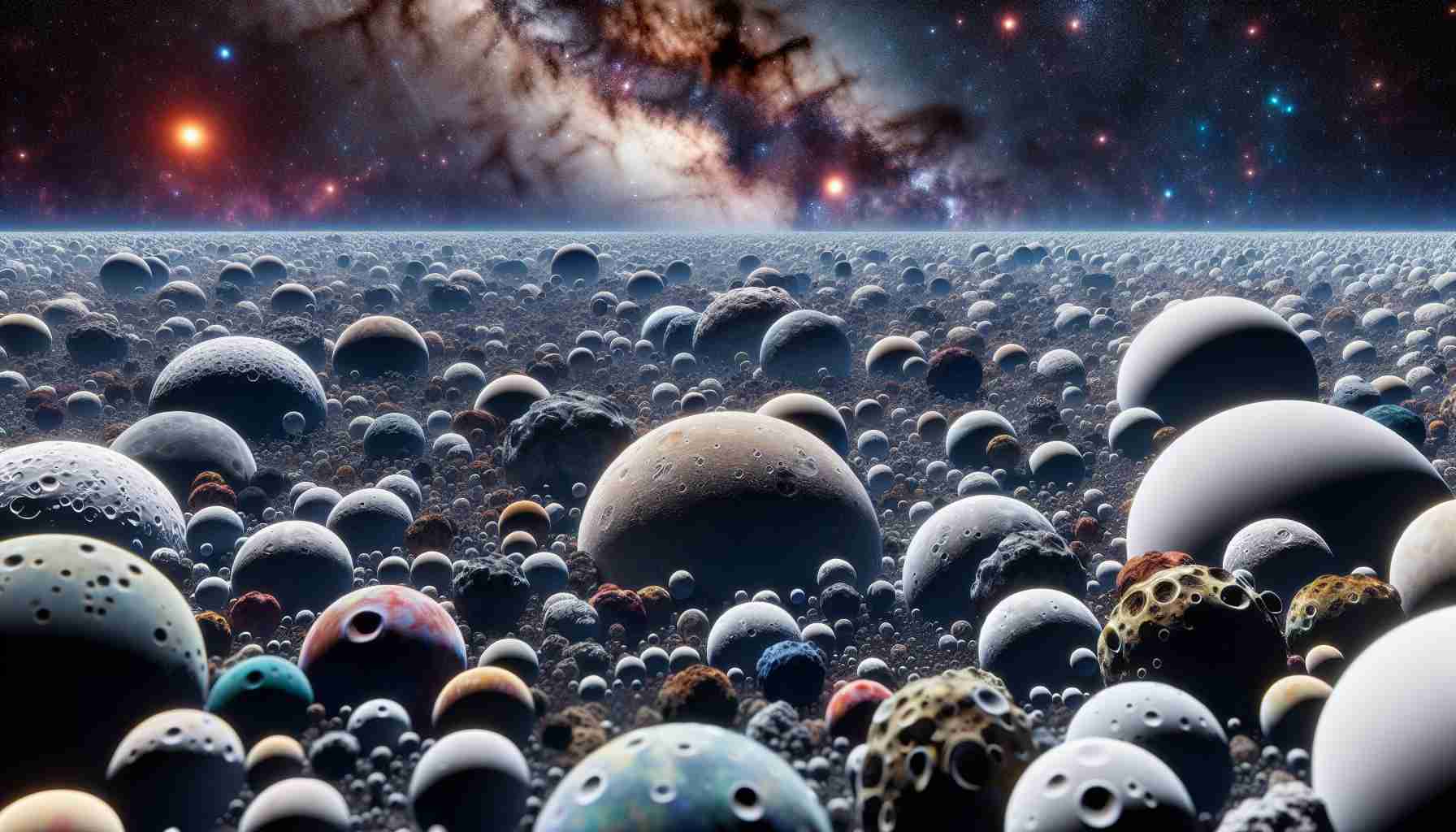A Vast Landscape of Cosmic Wanderers
Hidden beyond the familiar realms of our Solar System lies a realm known as the Kuiper Belt, a ring-shaped expanse teeming with icy rocks and dwarf planets like Pluto and Arrokoth. Long regarded as the outer frontier of our cosmic neighborhood, recent observations have unveiled an unexpected revelation that challenges our understanding of this distant domain.
The Echoes of Time Encapsulated
The Kuiper Belt stands as a celestial time capsule, preserving remnants dating back approximately 4.6 billion years to the formation of our Solar System. Shielded from the Sun’s intense radiation, Kuiper Belt Objects (KBOs) offer a glimpse into the early stages of planetary evolution and the vast cloud of material from which our celestial bodies emerged.
Unveiling a Cosmic Enigma
A recent breakthrough highlights the existence of two distinct realms within the Kuiper Belt separated by a curious void. The discovery of an outer population of KBOs, along with the puzzling gap between 55 and 70 astronomical units, challenges previous assumptions about the structure and size of this region, hinting at a more complex tapestry of planetary formation.
Reframing Our Solar System’s Narrative
The revelation of this additional Kuiper Belt component not only reshapes our understanding of the solar system’s architecture but also aligns it more closely with the patterns observed in other planetary systems. This newfound perspective prompts a reconsideration of our cosmic uniqueness and opens the door to a broader exploration of planetary system diversity.
Peering Into the Beyond
As astronomers track the orbits of distant Kuiper Belt objects, the implications of this discovery continue to unfold. By unraveling the mysteries of this distant expanse, we not only gain insights into our own planetary origins but also broaden our perspectives on habitability, cosmic evolution, and the interconnectedness of our universe.
Unraveling the Kuiper Belt’s Intriguing Secrets
New Frontiers, New Questions
While the Kuiper Belt has long captivated astronomers with its icy inhabitants and dwarf planets, recent studies have raised fascinating new questions about this enigmatic region. One of the most pressing inquiries revolves around the origins of the Kuiper Belt itself. How did this vast collection of icy bodies come to exist in the outer reaches of our Solar System? Scientists are actively researching the role of planetary migration, gravitational interactions, and primordial material in shaping this cosmic landscape.
Key Challenges and Controversies
An ongoing challenge in studying the Kuiper Belt is unraveling the complex dynamics that govern the orbital motions of its numerous objects. The gravitational influence of Neptune, as well as other outer planets, plays a significant role in shaping the structure of the Kuiper Belt. However, understanding how these interactions have evolved over billions of years remains a contentious issue among researchers. Disentangling the history of collisions, migrations, and orbital resonances within this distant realm poses a formidable task in deciphering its mysteries.
Advantages and Disadvantages
One advantage of studying the Kuiper Belt is the wealth of information it provides about the early stages of our Solar System’s formation. By analyzing the composition and orbital characteristics of Kuiper Belt Objects, scientists can gain valuable insights into the processes that gave rise to planets, moons, and other celestial bodies. However, the vast distances and faintness of objects within the Kuiper Belt present logistical challenges for observation and data collection. Researchers must employ advanced telescopic technologies and sophisticated analytical techniques to overcome these obstacles.
Exploring the Uncharted Territories
As we continue to delve deeper into the mysteries of the Kuiper Belt, we stand on the brink of a new era of discovery. By addressing the fundamental questions surrounding the origin and evolution of this ancient region, we not only enrich our understanding of planetary formation but also gain valuable insights into the broader processes shaping the cosmos. The Kuiper Belt serves as a testament to the enduring mysteries of our celestial neighborhood and the limitless wonders awaiting exploration.














